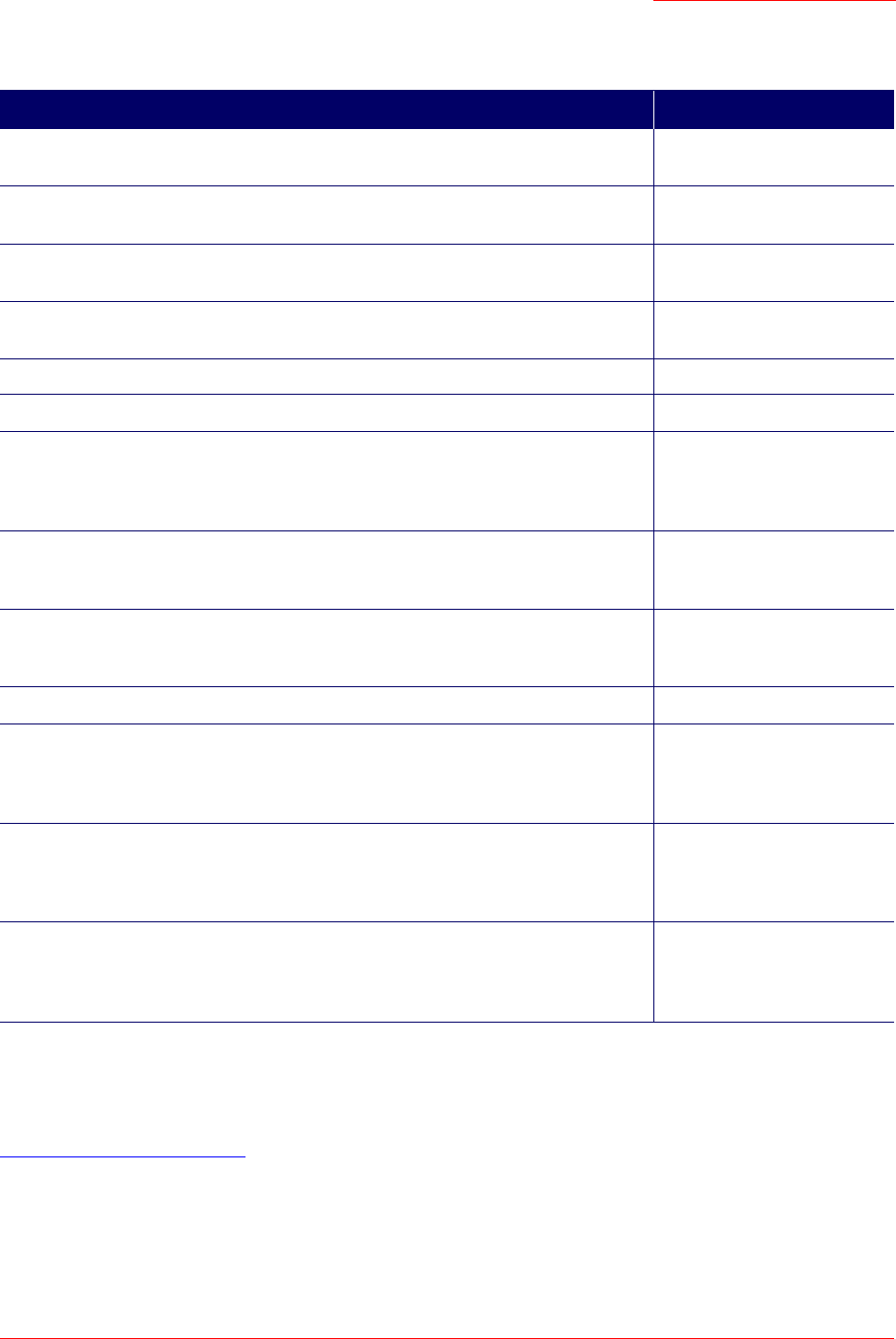
Professional Access Point
Administrator Guide
Class Structure, Commands, and Examples - 248
Keyboard Shortcuts
Tab Completion and Help
Help on commands can be requested at the command line interface (CLI) by using the TAB key. (See also
“Basic Settings” on page 192
.)
Hitting TAB once will attempt to complete the current command.
If multiple completions exist, a beep will sound and no results will be displayed. Enter TAB again to display
all available completions.
Action on CLI Keyboard Shortcut
Move cursor to the beginning of the current line Ctrl-a
Home
Move cursor to the end of the current line Ctrl-e
End
Move cursor back on the current line, one character at a time Ctrl-b
Left Arrow key
Move the cursor forward on the current line, one character at a time Ctrl-f
Right Arrow Key
Start over at a blank command prompt (abandons the input on the current line) Ctrl-c
Remove one character on the current line. Ctrl-h
Remove the last word in the current command.
(Clears one word at a time from the current command line, always starting with the
last word on the line.)
Ctrl-W
Remove characters starting from cursor location to end of the current line.
(Clears the current line from the cursor forward.)
Ctrl-k
Remove all characters before the cursor.
(Clears the current line from the cursor back to the CLI prompt.)
Ctrl-U
Clear screen but keep current CLI prompt and input in place. Ctrl-l
Display previous command in history.
(Ctrl-p and Ctrl-n let you cycle through a history of all executed commands like Up
and Down arrow keys typically do. Up/Down arrow keys also work for this.)
Ctrl-p
Up Arrow key
Display next command in history.
(Ctrl-p and Ctrl-n let you cycle through a history of all executed commands like Up
and Down arrow keys typically do. Up/Down arrow keys also work for this.)
Ctrl-n
Down Arrow key
Exit the CLI. (At a blank command prompt, typing Ctrl-d closes the CLI.)
(Typing Ctrl-d within command text also removes characters, one at a time, at cur-
sor location like Ctrl-h.)
Ctrl-d
